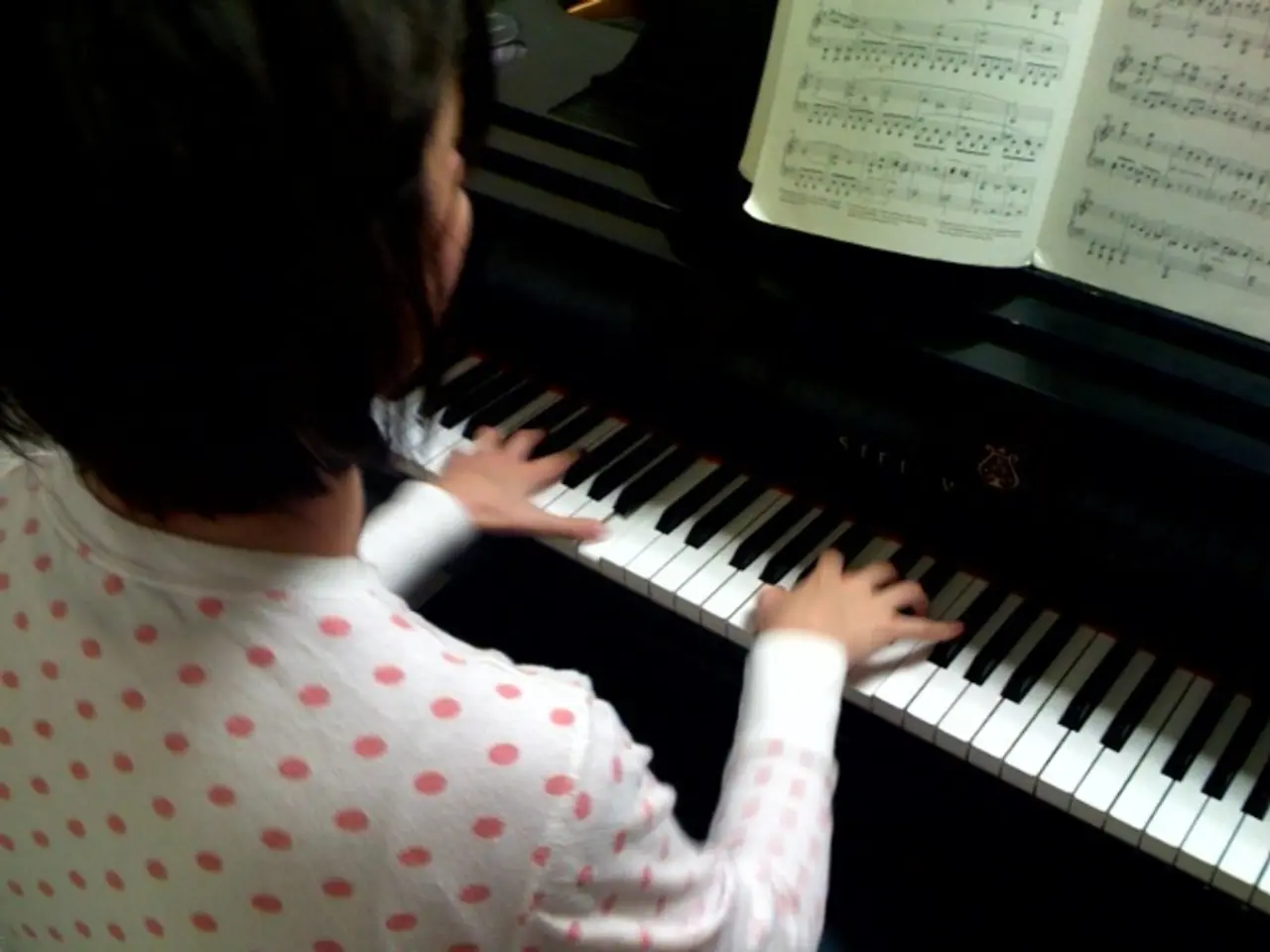Importance of Relaxation in Learning Piano Lessons
In the world of classical piano, the Scaramuzza technique stands out for its focus on expressive and efficient movement, aiming to prevent injury and maximize musicality. Here's a guide to help you learn and master this technique, focusing on avoiding stress injuries and improving your playing.
The Scaramuzza technique places great emphasis on using the weight of the arms to produce sound, rather than relying solely on the fingers. This approach is crucial, as fingers alone do not have enough mass to comfortably support the resistance of the keys. The technique includes numerous finger exercises to enhance finger strength and flexibility, which is crucial for legato playing, where the aim is to achieve a smooth, connected sound between notes.
To avoid stress injuries, it is essential to maintain relaxed muscles and natural movements. The Scaramuzza technique emphasizes fluidity and avoidance of tension. Focus on playing with minimal muscle strain and let movement come from joints with ease rather than forcing fingers or wrists.
Proper posture and hand positioning are also key. Align your arms, hands, and fingers correctly to prevent unnecessary stress. Avoid collapsing the wrist or hyperextending fingers; keep a neutral, flexible hand shape.
Progress gradually with technical exercises, building strength and dexterity slowly rather than attempting difficult passages at full speed immediately. Use slow practice to develop controlled movements.
Taking frequent breaks during practice sessions allows muscles to recover, reducing the risk of overuse injury. Warming up the wrists, hands, and arms before playing improves blood flow and flexibility, and performing warm-up and stretching exercises is highly recommended.
If you feel pain, numbness, or unusual tension, stop and reassess your technique or rest. Listening to your body and adjusting accordingly is essential for maintaining a healthy and effective practice routine.
Developing the muscles of the fingers is crucial in the Scaramuzza technique to achieve amplification of the dynamic range while keeping all the stress in the system under control. Learning to lift the fingers contributes to touch uniformity, which is important for achieving stylistic transparency sought after by classical pianists.
With practice and dedication, you can achieve a smooth, connected sound and a wider dynamic range, and become a better pianist. The Scaramuzza piano technique is one of the most widely used techniques in classical piano training, and with its focus on expressive and efficient movement, it offers a unique approach to mastering the piano.
For detailed exercise examples or personalized coaching tips, consulting a teacher trained in the Scaramuzza method is recommended. Embrace the Scaramuzza technique, and let your musical journey be a smooth and enjoyable one.
The Scaramuzza technique emphasizes using the weight of the arms, not just the fingers, to produce sound, as fingers alone lack the mass to comfortably support the resistance of the keys. To avoid stress injuries, it's crucial to maintain relaxed muscles and natural movements, and to perform warm-up and stretching exercises before practice. Frequent breaks during sessions allow muscles to recover, reducing the risk of overuse injury. Mastering the Scaramuzza technique can lead to a wider dynamic range and a smooth, connected sound on the classical piano, making it a widely used method in classical piano training.




